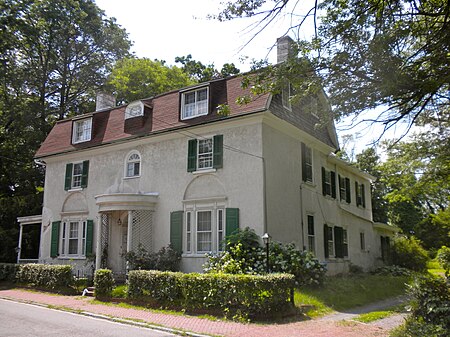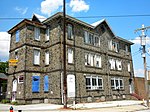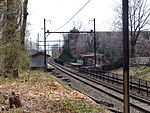Fisher's Lane

Fisher's Lane is a national historic district located on East Logan Street in the Wister neighborhood of Philadelphia, Pennsylvania, USA. The district includes 12 contributing buildings and three contributing structures in a residential section of Wister. The houses are representative of the Second Empire and Italianate-styles of architecture. Specific properties include those at numbers 39, 53, 69, 75 and 81 on the northwest side of East Logan Street and 48, 62, 76, 82 and 90–92 on the southeast side. The artist Joseph Pennell lived at 75 East Logan as a teenager. One of his early works depicting "the ugly house across the street" won a prize in a school art show, presented to him by the state.It was added to the National Register of Historic Places in 1980.
Excerpt from the Wikipedia article Fisher's Lane (License: CC BY-SA 3.0, Authors, Images).Fisher's Lane
East Logan Street, Philadelphia
Geographical coordinates (GPS) Address Nearby Places Show on map
Geographical coordinates (GPS)
| Latitude | Longitude |
|---|---|
| N 40.029444444444 ° | E -75.161111111111 ° |
Address
East Logan Street 51
19144 Philadelphia
Pennsylvania, United States
Open on Google Maps











